Twelve long and dark hours of creeping, crawling, and ducking from the sight of enemies. Under these conditions, any normal human being would be terrified. But not Corporal Desmond Doss. After the men of the 1st battalion furiously attacked the Japanese on Hacksaw Ridge and destroyed one of their bunker complexes, the Japanese retaliated with unforeseen savagery and executed a counterattack that forced the Americans back over the escarpment with heavy losses. For the next twelve hours, Corporal Doss remained on Hacksaw Ridge and rescued 75 wounded American soldiers. After every soldier he lowered, Doss said a little prayer just before he headed out to get another. “Lord, please help me get one more.”1
In 1941, World War II was already bubbling across Europe. Most Americans were against the United States entering the war. Nonetheless, a good number, including President Franklin Delano Roosevelt, believed that the only way to do this was by supplying the French and British with money, munitions, and the like. This was the plan, up until Imperial Japan’s attack on Pearl Harbor. The attack on Pearl Harbor enraged the nation and prompted the United States to declare war on the Japanese Empire. This caused a chain reaction that led to Hitler declaring war on the United States, and in return, the United States declaring war on all the Axis Powers. Within a short time, the United States was front and center in the conflict. 2
Doss worked a job that was crucial to the defense of the nation–he worked in a shipyard–and when the Army came knocking, he could have avoided service in the military through deferment; but that went against his personal mores. Did I mention that Doss was a conscientious objector? Yes, he grew up as a Seventh-Day Adventist and developed a deep veneration for the Ten Commandments, one of which states “Thou shall not kill.” Surprisingly, his beliefs didn’t stop him from wanting to register for the military. Doss was a patriot and was determined to show it through his service to his fellow men and nation. He eventually signed up for the Army but opposed doing any killing or doing any work on his Sabbath. As one would expect, none of his superiors nor his comrades were pleased by this, and they labeled him a conscientious objector. Albeit, Doss disagreed with the title and preferred the term, “conscientious cooperator.”
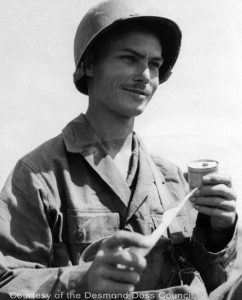
Doss, in line with his beliefs, requested to be put in the medic class. Unfortunately, the Army had its own plans, and placed him in a rifle company. He was sent to Fort Jackson in South Carolina to begin his basic training. Whilst he was with the Army, Doss was mistreated, ridiculed, and nearly kicked out on more than one occasion just because of his beliefs and practices. He was very different from his worldly comrades, who could not fathom his reasoning behind avoiding the “fun” things, like fornicating, drinking, and gambling. Consequently, they saw him as weak and soft. In addition, his getting passes to leave on Saturday did not please his comrades either. However, unknown to them, he managed to convince his superiors that he would do the chores for Sunday when the other soldiers were away. Sometimes, Doss would have to go above his commanders just to get a pass, and that worsened his relationship with them. During training, when Doss was ordered to pick up a rifle, he refused, and this frustrated his comrades and superiors even more.3
Eventually, his unit was shipped out to Fort Sill in Oklahoma. There, Doss was having a lot more trouble with practicing his beliefs and often went to church on his Sabbath without permission. This, in addition to his refusal to pick up a weapon, led to his superiors attempting to dismiss him on a Section 8 for mental instability. However, Doss fought it and stated that he could not be discharged because of his religion, and the committee agreed. His superiors were still fed up, and not too long after, Doss was threatened to be court-martialed for refusing a direct order to pick up a gun by Captain Cunningham. Fortunately, another officer was passing by and intervened. He told Cunningham to back off and respect what was written in his record. Cunningham relented but later denied Doss passes to see his wife and his brother. Eventually, he was transferred to the 307th Infantry Regiment of the 77th Infantry Division, where he served as a medic. He was able to make a mark by showing deep concern for his platoon by tending to them after a brutal 25-mile march with full gear. Finally, he was appreciated by his comrades.4
In 1944, Doss and his company finally finished basic training and were shipped out to the Pacific Theater. He saw his first action in the Battle of Guam, where the goal was to recapture the Island of Guam from the Japanese. He went forward with different units and repeatedly removed wounded soldiers from battle while under fire so they could be treated. The United States emerged victorious with the loss of about 7000 men, while the Japanese lost double that number. His company was then shipped to Leyte, an island in the Philippines, to fight. During the battle, Doss was told by a runner that some soldiers were trapped on top of a hill. He ran to them and treated the first soldier who ranted hysterically about how he had gone blind. He poured water on his eyes and cleaned off the blood that had covered them from a wound on his forehead, and then treated the wound. The second soldier was one of his close friends. His name was Glenn. He was unconscious but was breathing. With the aid of the runner, Doss carried him to the aid station. On the way there, they were shot at by the Japanese, and the runner was hit. Eventually, Doss was able to get the runner and Glenn on a Jeep headed to the aid station, but tragically, Glenn died. He saved many other soldiers during the Battle of Leyte. One time, he reportedly ran across an open field under intense fire to retrieve two wounded soldiers; unfortunately, one had already perished, so he evacuated the other one. Another time, he rushed to the aid of a man against his sergeant’s orders while being trained by a sniper. He eventually treated the man and was able to bring him to safety. Doss earned two bronze stars with a “V” device for the valor and heroics he displayed in these two battles. In years to come, he did say that he knew the men he saved and that they were his buddies, so he wanted to be there to take care of them. This energy he gave off, alongside his heroic actions, earned him the gratitude and admiration of his fellow soldiers.5
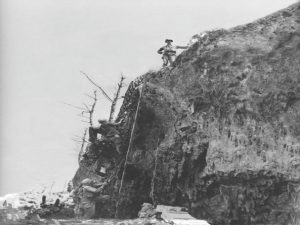
In late April 1945, Doss and the 307th arrived in Okinawa, where the Battle of Okinawa had already begun. If the Americans could successfully capture Okinawa, it would place them perfectly beside the Japanese islands. However, it turned out to be incredibly difficult, and this battle became the bloodiest in the Pacific, leading to the deaths of about 13,000 American soldiers, 110,000 Japanese soldiers, and 150,000 civilians within three months. Doss’ unit was given the task of taking over the Maeda Escarpment, which was a steep 400-yard high hill that was about 100 yards wide at the top and sloped downwards, leaving a cliff with a 5-yard overhang. It is popularly known as Hacksaw Ridge. The purpose of this was so the Americans would have a vantage point over a Japanese military headquarters. To get up onto the ridge, the soldiers used cargo nets roped together as makeshift ladders. On April 29, when the first company went up, they couldn’t tell where the Japanese were because they had had time to dig many foxholes and trenches. The Americans had no protection and were defenseless when the Japanese attacked and slaughtered them. After this, the remainder of the first company went down and the second was ordered to go up. Doss told the lieutenant that the men should pray that God protected them, but the lieutenant insisted that Doss should pray for the men. The men gathered around him, and he prayed to God to give directions to the lieutenant so he could give the right orders to his men. When the second company climbed to the top, they managed to kill eight Japanese without getting hurt before the fire was returned to them. Many believed that Doss’ prayers had protected them. Throughout the battle, Doss was busy preserving life while others were taking it. Whenever Doss heard the cry for a medic, he neglected his own safety and ran into the heat of battle to treat fallen comrades and then carry them to safety. He repeatedly did this while bullets whizzed past him and mortars exploded around him. Many times, he was so close to enemy lines that he could hear the whispers of the Japanese soldiers, but this didn’t stop him from saving his men.6
On May 5, 1945, Doss was reading his bible and praying because it was his Sabbath, when his Captain asked him if he could go up the escarpment as he was the only medic left. He requested time to finish his prayers, but his Captain urged him, saying that they did not have the time. However, once Doss’ company was atop the ridge, what followed was nothing short of a disaster. Following the plan, the troops threw bags of TNT at the Japanese. Immediately, the Japanese began to pull out the fuses, thereby halting the explosions. The men began to pour gasoline down the foxholes where the Japanese soldiers were camped. Someone then flung a grenade into the foxhole and that set off a chain reaction of explosions. The Americans had thought that this devastating explosion had halted the Japanese, but as the dust settled, they stormed the Americans with a surprise attack. The Japanese started to emerge from different trenches and foxholes as they rushed at the Americans. The captains called for an immediate retreat, but it didn’t go exactly as planned as many men were hit by a barrage of machine gun fire and artillery bombardment before they could get off the escarpment.
Doss saw all this happen and knowing that Japanese soldiers sometimes tortured wounded soldiers, he could not bring himself to leave all those men up on the ridge. So, while his company ran away from the gunfire, Doss ran right back into it. Amidst the bombardment of mortar shells and unending gunfire, Doss tended to the wounded that were left for dead. He was determined to save as many souls as he could, and hour after hour, explosion after explosion, Doss wrapped countless bandages and tied numerous tourniquets. He dragged each and every soldier he treated to the edge of the ridge, and using a special knot that he had accidentally learned, he lowered them to the bottom of the ridge. Before he returned to save another, Doss prayed saying, “Lord, please help me get one more.” He continued until he could carry on no more. Over a 12-hour period, Doss was able to save a good number of the men who had once mistreated and ridiculed him, including his captain, Jack Glover, which came as an irony. When he came down from the ridge, he was unhurt but covered in the blood of the men he saved and tried to save. Doss was credited with saving about 100 men, but he insisted that he saved only 50. They came to a compromise and accepted 75 as a middle ground.7
The Americans successfully captured Hacksaw Ridge two weeks later and were battling the Japanese, again, two miles away from the escarpment. Whilst he was treating some soldiers in a foxhole, a grenade landed at their feet. Instantaneously, Doss kicked the grenade as it detonated, and it sent him flying. The explosion left about 17 pieces of shrapnel in his leg and several lacerations. Rather than have another medic leave safety to come and tend to him, he tended to his wounds himself. Five hours later, Ralph Baker arrived with a stretcher and began to carry him to the aid station. On the way, he saw another soldier with worse injuries than himself, so he got off the stretcher and crawled over to tend to the man’s wounds and let them take him instead. Waiting for another stretcher to get to him, Doss was shot in the arm by a Japanese sniper, and it resulted in his arm shattering. He used a rifle stock to create a makeshift splint and crawled all the way to an aid station. Although the soldiers were overjoyed to find out that he had survived, he was dismayed to have realized he lost his Bible. At a field hospital, Doss was treated, and the pieces of shrapnel were taken out of his leg. He was then shipped back home to recover on the hospital ship, Mercy.8
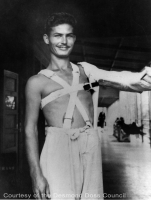
Months after, on October 12, 1945, Doss was invited to the White House to receive the Medal of Honor. President Harry Truman shook hands with Doss and told him, “I’m proud of you. You deserve this, I consider this a greater honor than being president.” This made Doss the first conscientious objector to receive the Medal of Honor. He reportedly said, “I feel that I received the Congressional Medal of Honor because I kept the Golden Rule that we read in Matthew 7:12. ‘All things whatsoever ye would that men should do to you, do ye even so to them.’” Not only was Doss awarded the Medal of Honor, but he was also awarded 2 Bronze Medals, 3 Purple Heart Medals, and others. However, the biggest compensation to Doss was when his commanding officer handed him a burned and soggy Bible that was actually his. After their victory on Hacksaw Ridge, every able-bodied soldier searched for it.9
Life after the war for Doss was difficult, as he was unable to continue his work in the shipyard due to his broken hand not completely recovering. Doss developed tuberculosis, which he was believed to have contracted on the island of Leyte. He battled this for about six years and eventually lost a lung and five ribs. The military had also overdosed him on antibiotics, which eventually left him deaf. This forced him to live in silence for about twelve years before he got a cochlear implant. Despite the health issues he faced, Doss lived the rest of his life peacefully on a farm in Alabama with his family until he died in 2006 from lung complications.10
Doss’ legacy cannot be forgotten. He saved many lives during the war even when the people around him believed that he would be deadweight. He was always courageous in the face of danger and ran to preserve any life he could.
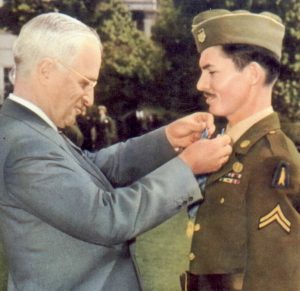
- Erin Kelly, “How Desmond Doss Became A World War 2 Hero Without Firing A Single Bullet,” All That’s Interesting (website), November 6, 2021, https://allthatsinteresting.com/desmond-doss. ↵
- “The Aftermath – Pearl Harbor after the Attack,” Pearl Harbor (website), October 23, 2016, https://pearlharbor.org/blog/aftermath-pearl-harbor-attack/. ↵
- Jack Lasky, “Desmon Doss.,” in Salem Press Biographical Encyclopedia (Salem Press, June 30, 2020). ↵
- “Hacksaw Ridge vs the True Story of Desmond Doss, Medal of Honor,” History vs Hollywood (website), accessed May 8, 2023, https://www.historyvshollywood.com/reelfaces/hacksaw-ridge/. ↵
- Gabriela Ochoa, “‘God Will Protect Me’: The Story of Desmond Doss, a Man Who Would Never Touch a Gun,” StMU Research Scholars (website), accessed February 21, 2023, https://stmuscholars.org/god-will-protect-me-the-story-of-desmond-doss-a-man-who-would-never-touch-a-gun/. ↵
- Michael E. Telzrow, “Desmond Doss,” New American (08856540) 32, no. 21 (November 1, 2016): 34–38. ↵
- James H. Willbanks, America’s Heroes: Medal of Honor Recipients From the Civil War to Afghanistan : Medal of Honor Recipients From the Civil War to Afghanistan (Santa Barbara, Calif: ABC-CLIO, 2011). ↵
- Gabriela Ochoa, “‘God Will Protect Me’: The Story of Desmond Doss, a Man Who Would Never Touch a Gun,” StMU Research Scholars (website), accessed February 21, 2023, https://stmuscholars.org/god-will-protect-me-the-story-of-desmond-doss-a-man-who-would-never-touch-a-gun/. ↵
- William C. Puddy et al., “Revisiting Desmond Doss (1919–2006): Merging Combat Medicine and Benevolence on the Battlefield,” Journal of Emergency Medicine 56, no. 1 (January 1, 2019): 114–19, https://doi.org/10.1016/j.jemermed.2018.10.004. ↵
- “Hacksaw Ridge vs the True Story of Desmond Doss, Medal of Honor,” History vs Hollywood (website), accessed May 8, 2023, https://www.historyvshollywood.com/reelfaces/hacksaw-ridge/. ↵
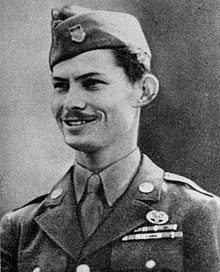
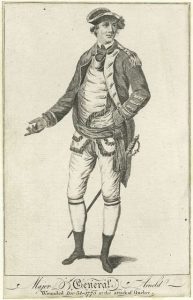
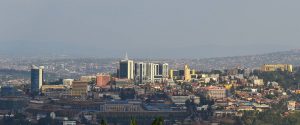
2 comments
Andrew Ponce
Hello Nnamdi! This article topic is one that I am personally familiar with; however, despite my familiarity this article managed to captivate my mind and teach me more than I had already known about Desmond Doss. This article serves a purpose to those who already know this man’s story and to those who are not familiar. To those who are not familiar, the article teaches about how the courage and faith within a man is stronger than thought. To those who have already heard Doss’ story, this article reminds them of his story and reminds them of the power of bravery. Love this topic and love this article. Great work!
Gaitan Martinez
I do remember watching the movie (yes I’m aware moving do dramatize stories) and this movie was accurate. Truly, a remarkable story of a medic wanting to save as many lives as possible, and wanting to never take a life. I do find it very intriguing how he served the war without a firearm. We Americans talk about freedom, but it really annoyed me how all of his fellow soldiers and higher ups disrespected him because he didn’t want to kill anyone. However, he saved many lives compared to others who ended lives.